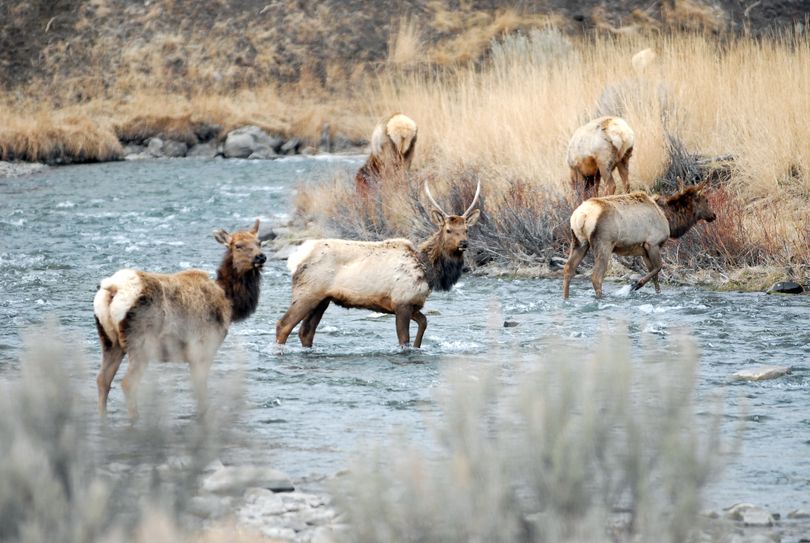Yellowstone elk numbers drop suddenly

WILDLIFE -- The Yellowstone National Park elk herd, the most observed and photographed elk in the country, declined by an astonishing 24 percent in December.
- Early heavy snowfall might have caused elk to move during the survey to locations different from years past.
- Early snow also caused elk to move out of the park and into open hunt areas in greater numbers this fall prompting a large elk harvest.
- Climate -- drought plaged the northern portion of the park from 1996 to 2008.
- Predators --wolves, grizzly bears and mountain lions have taken a toll on the population.
Wolf predation has seemed the most likely cause, since the Northern Yellowstone elk herd stood at 17,000 to 19,000 before the wolves' reintroduction to Yellowstone National Park in 1995. This year, 7,109 elk were counted, an increase from the previous two years when 6,279 and 6,738 elk were counted.
However, Smith was quick to point out the dwindling population of wolves in the northern part of the park didn’t cause the elk decline on their own.“This is a multi-causal elk decline,” he said, “multiple predators, hunting effects, measurement error, and environmental effects.”
Montana State University researchers told the Billings Gazette that a combination of factors appears to be preventing the elk from getting enough nutrition.
The elk used to migrate down to large meadows to forage on grasses the entire winter. The seven-year study found that the presence of wolves had pushed the elk into the mountains. "That means that rather than grazing, as they'd prefer, the elk are turning to browse for food -- shoots, leaves and twigs on bushes and trees," the Gazette reported. "Although nutritious and high in protein, the browse isn't enough to pack on pounds to keep impregnated elk healthy.
Elk without the pressure of wolves ate 27 percent more food, the study found. Elk prefer to graze if given the choice, but the elk in the study area weren't hanging out in the grassy patches when the wolves were around.
Yellowstone will step up efforts to monitor the herd, Smith said.
